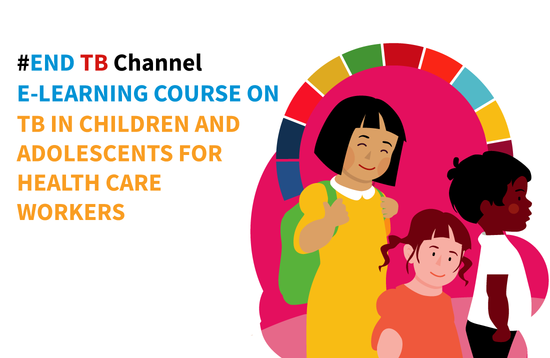
TB is a preventable and curable disease, yet it is a common cause of sickness and death in children and adolescents. Every year, more than 1 million children and young adolescents fall ill with TB. Young children are at increased risk of severe disease and death; adolescents are at increased risk of disease that can be readily transmitted. Important gaps remain in finding children and adolescents with TB and in providing TB treatment and TB preventive treatment (TPT) to children and adolescents.
This e-course gives practical guidance on key elements of the management of TB in children and adolescents. The role of health care workers in preventing, identifying and managing TB in children and adolescents is critical.
语言: English
Intermediate (Intermediaire), Tuberculosis
课程信息
Overview: This e-learning course was developed by WHO. It is a self-paced online course based on the content of the WHO operational handbook on tuberculosis. Module 5: Management of tuberculosis in children and adolescents (2022).
Course duration: About 2.5 hours.
Certificate: Participants with a score of 80% or higher on the final assessment can download a Certificate of Achievement. Participants who receive a Certificate of Achievement can also download an Open Badge for this e-course. Click here to learn how.
Course version: This is “Version 1.0” of this online course. At the end of the course, you will have the opportunity to share your feedback in a course evaluation survey. Please take the time to share your experience and opinions. Your feedback will be used to refine and update the course in order to produce a “Version 2.0”.
© World Health Organization 2023. All rights reserved. This e-learning training was developed by the World Health Organization (WHO). It is intended to be used as a self-learning course for health-care workers on the management of tuberculosis in children and adolescents. All reasonable precautions have been taken by WHO to verify the information contained in this e-learning training. However, the e-learning training is being distributed without warranty of any kind, either expressed or implied. The responsibility for the interpretation and use of the e-learning training lies with the reader. In no event shall WHO be liable for damages arising from its use.The designations employed and the presentation of the material in this publication do not imply the expression of any opinion whatsoever on the part of WHO concerning the legal status of any country, territory, city, or area or of its authorities, or concerning the delimitation of its frontiers or boundaries. Dotted and dashed lines on maps represent approximate border lines for which there may not yet be full agreement. The mention of specific companies or of certain manufacturers’ products does not imply that they are endorsed or recommended by the World Health Organization in preference to others of a similar nature that are not mentioned. Errors and omissions excepted; the names of proprietary products are distinguished by initial capital letters.
你将学到什么
- explain the principles of, and reasons for, screening for TB as part of primary care for children and adolescents in TB-endemic settings
- describe the steps in a management or “treatment decision” approach that are important to consider in all children who may require treatment for TB;
- describe how to make a clinical diagnosis of TB;
- explain how to make a bacteriological confirmation of TB using molecular WHO-recommended rapid diagnostic tests;
- list and apply the regimens used to treat TB disease or TB infection in children and adolescents;
- determine eligibility for the 4-month treatment regimen for children and adolescents with non-severe TB;
- initiate treatment using correct dosages and formulations (and provide education, counselling and treatment support);
- explain the different TB registers used along the cascade of care for children and adolescents;
- describe the main programmatic indicators for monitoring the provision of TB care and TB preventive treatment.
本课程适用于谁
- This e-learning course was developed for health care workers at primary health care level. It is assumed that you have experience of working in a TB programme at health-facility level.
课程内容
Course introduction
Module 1: Detection, treatment and prevention of TB in children and adolescents:
This module will look at why early detection and treatment of TB in children and adolescents is important.Module 2: TB diagnosis in children and adolescents :
This module will look at the clinical presentation and diagnosis of TB in children and adolescents.Module 3: The treatment and management of TB disease and infection:
This module will look at the treatment of TB disease and infection in children and adolescents.Module 4: Recording and reporting of TB data in children and adolescents
Final assessment
End of course evaluation
Acknowledgments